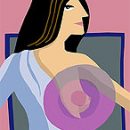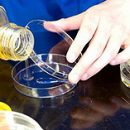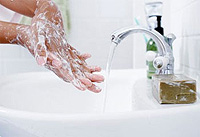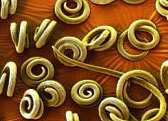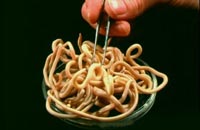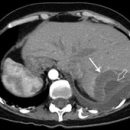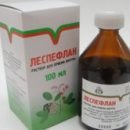«Mom, I have a head!» - Unfortunately, such words can often hear parents after the return of the child from the summer holiday. As a rule, the culprits are quickly discovered - the culprits. What to do parents?
Content
 «Mom, I have a head!» - Unfortunately, such words can often hear parents after the return of the child from the summer holiday. As a rule, the culprits are quickly discovered - the culprits. Often children are infected with lshami and in kindergartens, and in schools. Versh - bloodsowing insects, permanent parasites, all the livelihoods of which occurs on a person. They often feed (from 6 to 12 times a day), at the same time, for their lives, the female (and she lives for about a month) puts up about 140 eggs, which are also called reenides. Singing the egg, the female highlights the adhesive secret, with which the egg is firmly glued to the hair. Development from the egg to an adult insect takes about three weeks, so the number of lice increases extremely fast. One of the unpleasant manifestations of pediculosis is the itching occurs when eating. Itching is preserved at night. Permanent combing can lead to secondary skin infection with pyrogen flora, most often staphylococcal.
«Mom, I have a head!» - Unfortunately, such words can often hear parents after the return of the child from the summer holiday. As a rule, the culprits are quickly discovered - the culprits. Often children are infected with lshami and in kindergartens, and in schools. Versh - bloodsowing insects, permanent parasites, all the livelihoods of which occurs on a person. They often feed (from 6 to 12 times a day), at the same time, for their lives, the female (and she lives for about a month) puts up about 140 eggs, which are also called reenides. Singing the egg, the female highlights the adhesive secret, with which the egg is firmly glued to the hair. Development from the egg to an adult insect takes about three weeks, so the number of lice increases extremely fast. One of the unpleasant manifestations of pediculosis is the itching occurs when eating. Itching is preserved at night. Permanent combing can lead to secondary skin infection with pyrogen flora, most often staphylococcal.
Most often, the GDID, larvae and adults of lice can be found in the temporal and occipital regions of the head. With a high number of lice, hair can be glued by serous-purulent exudate in the so-called «Koltun». In addition, the lice can exist not only in human hair, but also on the smooth skin of the oars, earliest areas and neck. Live inclination with head pediculosis are at the base of the hair, while empty shells and dead eggs can be found at a considerable distance - up to 2-3 cm from hair roots. Localization of GDID on hair can help determine the illness of the disease. With the average hair growth rate of about 0.5 mm per day, postponed a month ago, nits will be at a distance of 1-1.5 cm from the skin. It should be noted that the presence of only empty egg shells and dead GIDs at a considerable distance from the scalp is not a diagnostic sign of an active infestation, but indicates a previously transferred pediculose.
How to get rid of unpleasant parasites?
The following options for solving the resulting problem are possible:
With insignificant defeat, people can be used by head ens Mechanical method their destruction - by combing insects and eggs with frequent ridge, haircuts or shaving hair. Before combing, the head of the hair washed the head, rinse with a warm 5-10% acetic acid solution. Then the nits are combined by a frequent comb, having skipping a cotton flavacy or thread, richly varieved by vinegar, which causes the destruction of the adhesive composition, holding the hair on the hair. Physical method lies in the destruction of insects by exposure to high or low temperatures and is recommended, first of all, against the wraising lice. Most often in everyday life, boiling clothes, stroking clothes hot iron. The most efficient and rapid way to get rid of heads is Chemical method, based on the use of pediculicides - insecticides intended for the destruction of lice. General requirement to meet pediculicide products, like all medicines - safety for the human body. In Russia, in comparison with other countries, the most stringent requirements for drugs are applied directly to the skin. They must be low toxic (referring to the skin to the 4th grade little dangerous connections according to GOST 12.one.007-76), not possess sensitizing, skin-resorbative and locally annoying action.
As active substances in modern pediculicidal agents, mainly pyrethroids are used (permethrin, D-phenothrin, allelet, etc.) (Shandah and DR., 2009). Pyrethroids act on the nervous insect system, damaging the sodium channels of nerve cells sensitive to the voltage change. Therefore, when processing patients with pediculose agents containing pyrethroids, the poisoning of the lice insecticide can first manifest itself in strengthening their motor activity, limb tremor and T.NS., which is often mistakenly regarded as a lack of pediculicide action. However, insect poisoning is irreversible, and the death of lice can occur both at the time of applying and exposure of funds and after a while after processing.
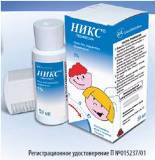 One of the well-proven funds against lice in Russia is cream Nix Production of the company «Glaxo Walcom GmbH and Co. Kg» («Glaxo Wellcom Gmbh&Co. Kg»), Germany. The active substance in the means is permethrin in one-thread concentration. Cream is applied to the patient's hair for a short time pre-washed with shampoo - 10 minutes, after which they wash off. A comb is attached to the drug with frequent teeth, allowing you to effectively comb nicks from the hair immediately after processing. The cream acts on the nits, which are more resistant compared to the larvae and adult insects to insecticides. Due to this, 90% of the cure of patients with head pediculosis is achieved in one-time processing. The drug is usually well tolerated.
One of the well-proven funds against lice in Russia is cream Nix Production of the company «Glaxo Walcom GmbH and Co. Kg» («Glaxo Wellcom Gmbh&Co. Kg»), Germany. The active substance in the means is permethrin in one-thread concentration. Cream is applied to the patient's hair for a short time pre-washed with shampoo - 10 minutes, after which they wash off. A comb is attached to the drug with frequent teeth, allowing you to effectively comb nicks from the hair immediately after processing. The cream acts on the nits, which are more resistant compared to the larvae and adult insects to insecticides. Due to this, 90% of the cure of patients with head pediculosis is achieved in one-time processing. The drug is usually well tolerated.
It should be noted that from all pediculicide tools allowed for use against the head pediculosis in Russia, only the cream of Nix can be used in children from 6 months.
- Lopatina Yu.IN., Sokolova T.In, Olifer in.IN. Pediculosis // Russian journal of skin and venereal diseases, №5, 2004, with.26-38.
- Shandal M.G., Frolova A.AND., Tsarenko B.BUT., Osipova N.Z. Information mail «On the fight against head, pubic and wrappings in order to nonspecific preventing the rapid and returnful types and the Volyn fever, the carriers of the pathogens of which are wrapping and headwheat» (as of January 1, 2009.) // disinfection case. 2009. № 2. WITH. 54-57.

